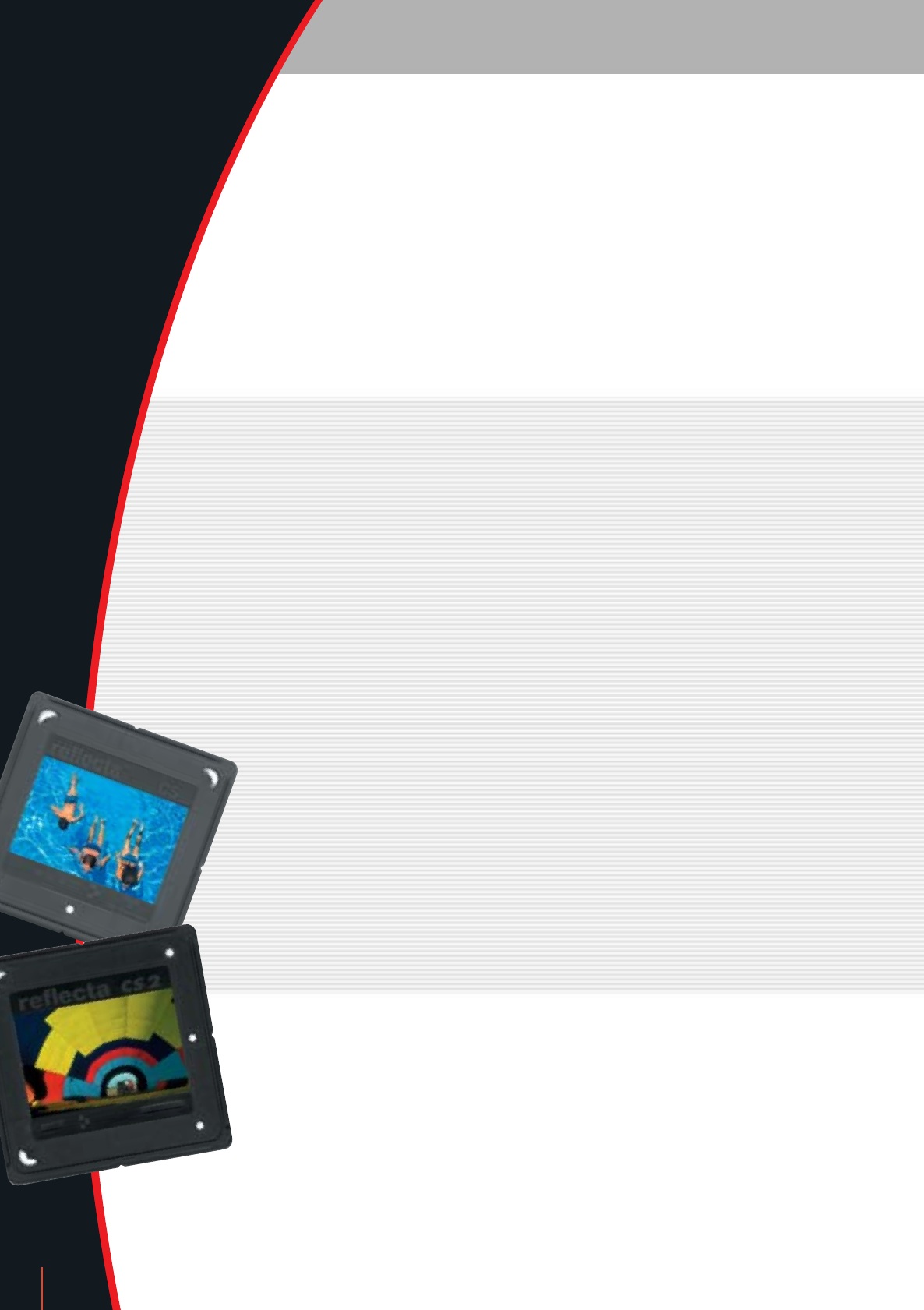Technical data

KNOW-HOW
Are positives (slides) or negatives better
suited for scanning?
At first, it seems obvious that the scanning
of positives, be it a framed slide or a film
strip, is easier than digitalising negatives.
After all, a positive is a real photo which can
be compared directly to a scan displayed on
a monitor. The mere scan preview will indi-
cate whether the exposure of the scanner is
adequate and whether the autofocus of the
slide scanner has found the correct focus.
With negatives, however, the film strip shows
inverse photos which, in addition, have an
orange coloured mask. A high degree of ima-
gination is required to conclude the correct
picture from the negative. The scanner soft-
ware has to correct the orange coloured
mask. It is even more difficult to determine on
a negative whether the photo was exposed
correctly and whether it is sharp or not. The
big advantage of directly comparing a scan
or a preview in the scanner software to the
original does not exist with negatives.
There are even more advantages
for slides: Slide films have a finer grain, have
a larger contrast range, provide more intense
colours and offer a higher resolution. Besi-
des, slide films have a higher density range:
The maximum density of a slide film can be
up to dmax = 4 to allow for finest shades of
the individual colours.
The high density range of a slide film,
however, also holds disadvantages: Many
bottom of the line film scanners do not have
such a high density range to be able to diffe-
rentiate individual shades of slides when
approaching the maximum density. By natu-
re, negatives have a smaller density range so
that even inexpensive scanners can handle
negatives well. Photographers know that it is
more difficult to take a slide than a negative
since slides take amiss the tiniest error in
exposure while negatives are much more
tolerant due to their lower contrast and dyna-
mic range. The same applies to scanning:
Correctly exposed positives can be scanned
very easily. For slightly under- or over-expo-
sed slides, however, corrections in the scan
programme or in the subsequent image edit-
ing will be required.
Does a good digital camera replace
an SLR?
Today's digital cameras produce very good
photos which can be printed in photo quality.
However, even the best digital cameras do
by far not offer the same photo information
as provided by a good SLR. A reasonable
example: A customary 5 megapixel digital
camera produces 5 million pixels – the maxi-
mum amount of information which can be
viewed on a monitor or printed on paper. A
good photo, in contrast, provides 10-20 milli-
on pixels.
High-quality digital cameras may reach
SLRs as far as image quality is concerned.
However, they still provide distinctly less in-
formation than contained in a negative or a
slide. The difference is not noticed when vie-
wing the photos on a monitor or printing
them in a format of 10x15 cm. If a detail of
the photo, however, is zoomed or the photo
is printed in DIN A4 format, the higher pixel
density of negatives or slides becomes
obvious.
Since the up-to-date film scanners with
a 4000 dpi resolution scan up to 21 million
pixels from a slide or negative, there is no
better combination at present than an SLR in
combination with a film scanner to generate
the most perfect digital photos.
4
REF_Scanner_0814_GB.qxd 03.09.2014 19:57 Uhr Seite 4










